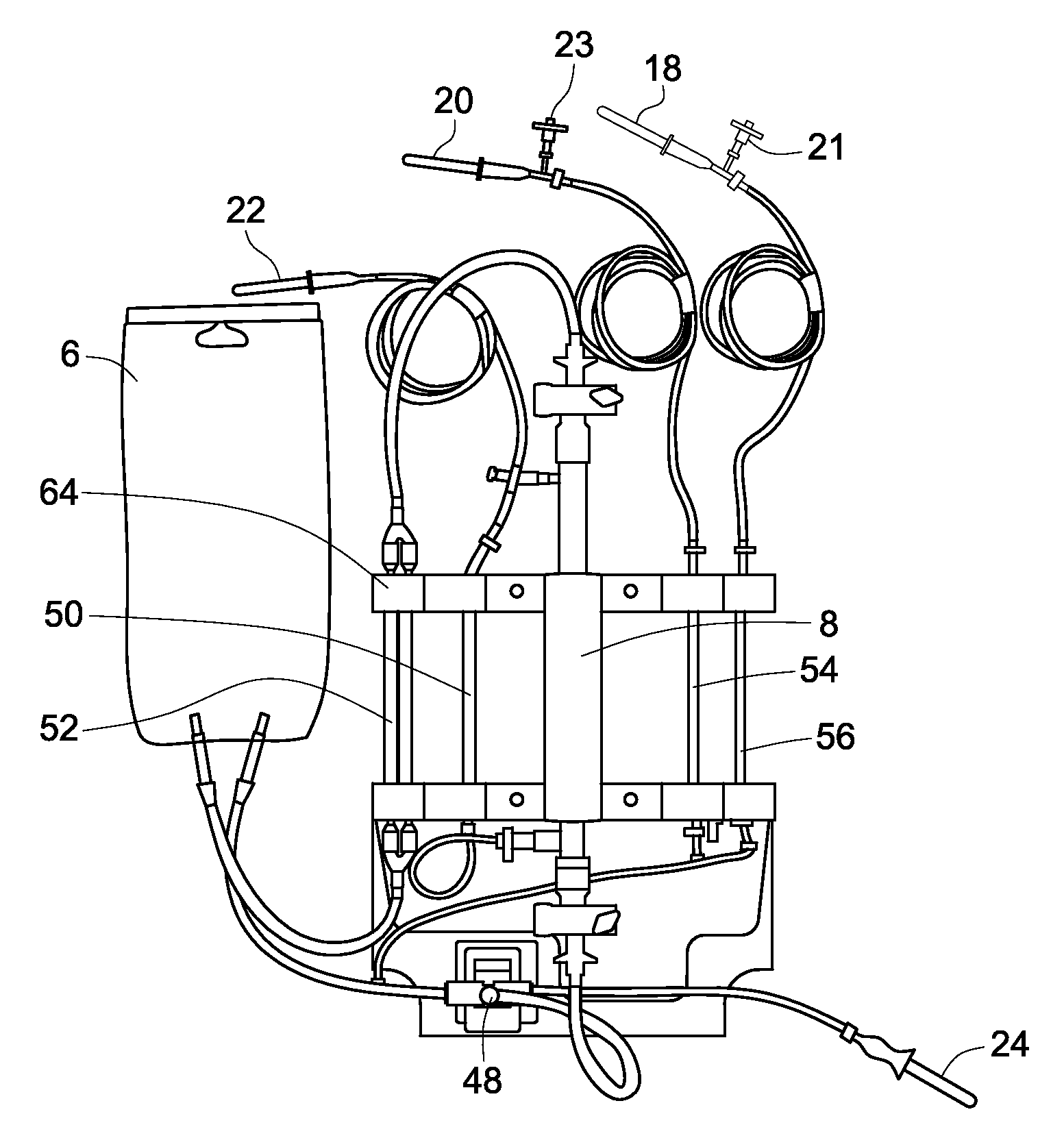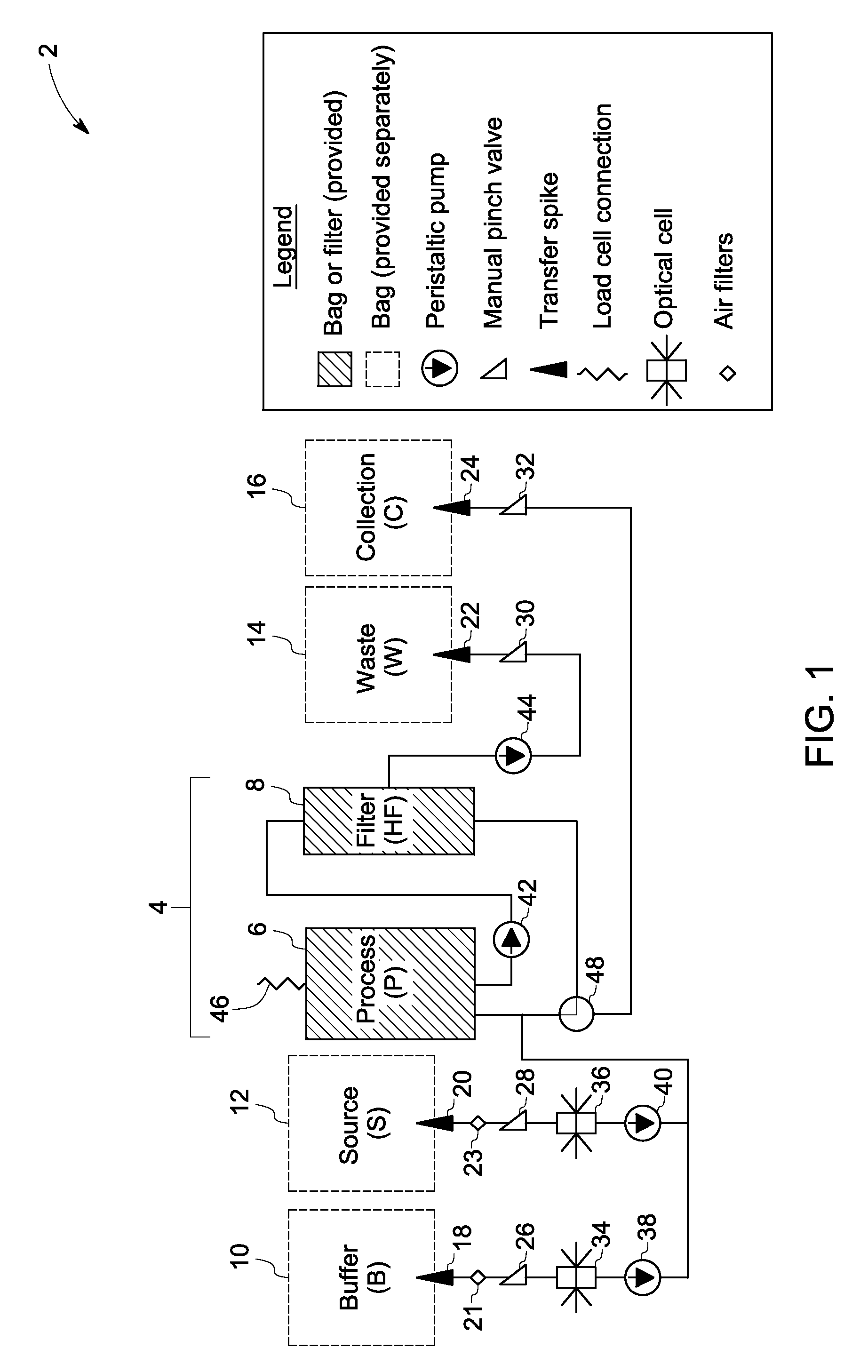Systems, methods and control laws for cell harvesting
a technology of system and control laws, applied in the field of systems, methods and control laws for cell harvesting, can solve the problems of insufficient quality and quantity output of these systems for therapeutic applications, and achieve the effect of high quality
- Summary
- Abstract
- Description
- Claims
- Application Information
AI Technical Summary
Benefits of technology
Problems solved by technology
Method used
Image
Examples
example 1
Concentration and Washing of a Preserved Cord Blood Sample
[0088]A 25 mL sample of nucleated cord blood cells was washed using the cell harvester. The sample experienced a 100× reduction in preservative (DMSO) concentration and a 1× concentration factor to result in the re-suspension of cells in 25 mL of injectable media. This process is performed with a low volume disposable to minimize the potential cell loss associated with holdup volumes in the disposable kit. The low volume disposable supports the relatively low maximum process and permeate flow rates of 50 and 5 mL / min, respectively. The disposable was initially rinsed. Next, since the first setpoint (100 mL) exceeded the source volume (25 mL) the contents of the source bag were transferred to the processing chamber without concentration. The addition of cells to the priming volume diluted the DMSO by 2×. The source bag was then rinsed with two volumes of 25 mL that were directly transferred to the processing chamber, resulting...
example 2
Concentration and Washing of a High Volume T-Cell Culture
[0089]A high volume of allogenic T-cells from culture was processed for 100× concentration and 100× residual reduction using the cell harvester for the translational research market. The high volume disposable was used for this application to maximize the processing rate. The larger filter, tubing, and valve of this disposable supported process and permeate flow rates of 3000 and 300 mL / min, respectively. Step 2 rinsed the disposable with buffer. In step 3, 20 L of cells were concentrated from the source bag into the process loop using the continuous concentration method, Step 3. The relatively low first set-point of 1000 mL relative to the source volume required that this concentration step was performed while directing filter permeate to waste. This requirement extended the loading step relative to the similar procedure performed in Example 1. Step 4 provided a limited rinse of the source vessel. Two low volumes of buffer we...
PUM
 Login to View More
Login to View More Abstract
Description
Claims
Application Information
 Login to View More
Login to View More - R&D
- Intellectual Property
- Life Sciences
- Materials
- Tech Scout
- Unparalleled Data Quality
- Higher Quality Content
- 60% Fewer Hallucinations
Browse by: Latest US Patents, China's latest patents, Technical Efficacy Thesaurus, Application Domain, Technology Topic, Popular Technical Reports.
© 2025 PatSnap. All rights reserved.Legal|Privacy policy|Modern Slavery Act Transparency Statement|Sitemap|About US| Contact US: help@patsnap.com



